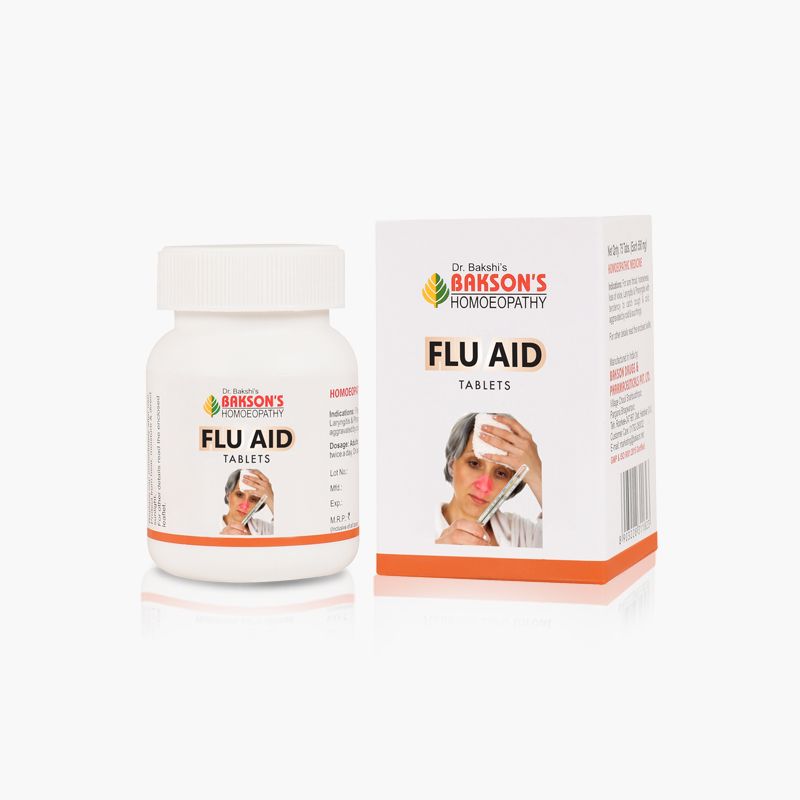We use cookies to make your experience better. To comply with the new e-Privacy directive, we need to ask for your consent to set the cookies. Learn more.
Influenza: Symptoms & Homoeopathic Medicines For Flu
Every year the flu season peaks between December and February and causes significant loss of workdays, human suffering, and mortality. Influenza also referred to as "the flu," is a contagious viral illness brought on by influenza viruses that affect the upper and lower respiratory tract. It is caused by various influenza viruses, including the four seasonal influenza virus subtypes A, B, C, and D.
- Influenza A viruses: subtypes that now infect people are A(H1N1) and A(H3N2) influenza viruses. There is just one kind known to have brought about pandemics.
- Influenza B viruses: The two lineages of influenza type B viruses currently in circulation are B/Yamagata and B/Victoria.
- Influenza C virus: Less frequently found, the influenza C virus typically results in minor illnesses.
- Influenza D viruses: Cattle are the primary victims of influenza D viruses.
Signs and symptoms of the flu include the virus spreading through mouth droplets produced by talking, sneezing, coughing, and touching contaminated objects or surfaces before touching the nose or eyes. Before symptoms show up and for 5-7 days following infection, it is communicable.
Difference between the common cold and flu
It's critical to distinguish between cold and flu symptoms. Knowing the day-to-day symptoms of flu would help you distinguish the same from that of a cold. Colds and influenza (flu) are both contagious respiratory infections, although they are brought on by various viruses. The common cold can be brought on by a variety of viruses, including rhinoviruses, parainfluenza, and seasonal coronaviruses, whereas influenza viruses only bring on the flu. It can be challenging (or even impossible) to distinguish between colds and flu based just on symptoms because they share many symptoms. If a person has the flu, specific tests can detect it. The flu is a more severe respiratory ailment than a cold. Those with colds are more prone than those with the flu to have runny or stuffy noses. In most cases, colds do not lead to major medical issues including pneumonia, bacterial infections, or hospitalizations. Serious consequences that are related to the flu can occur.
Difference between covid and flu
As flu season is starting in many parts of the world, how would you know if you have flu or COVID-19?
The first step to resolving your query comes with knowing the difference between covid and flu. Both COVID-19 and influenza are contagious respiratory diseases, although they are brought on by distinct viruses. The coronavirus (SARS-CoV-2) that infected COVID-19 was first discovered in 2019. A flu virus infection is what causes the illness (influenza viruses).
Unfortunately, it may be very challenging to distinguish between influenza and COVID in the early stages. The flu and COVID-19 both have a number of the same symptoms, including fever, exhaustion, cough, sore throat, runny nose, body pains, vomiting, headaches, diarrhoea, and more.
There are, however, two distinct differences between the flu and the coronavirus that causes COVID-19.
First of all, COVID-19 only causes a loss of taste and smell; the flu does not cause this. From two days after the infection is contracted to 14 days later, this particular symptom may appear.
Second, symptoms manifest in patients in quite different ways than they do in healthy individuals. Both the flu and COVID-19 produce coughing and breathlessness, but often, COVID-19 symptoms linger longer than flu symptoms do. With COVID-19, breathlessness can also develop later and can be more acute and lingering than with the flu.
Signs and symptoms of influenza
Acute symptoms of seasonal influenza include a high temperature, sore throat, runny nose, headache, muscle, and joint discomfort, and severe malaise (feeling poorly). The cough may be strong and linger for two weeks or more. Most people get through a fever and other symptoms in a week or less without needing to see a doctor. But influenza can result in serious illness or even death, especially in persons who are already at high risk. These categories include infants, the elderly, those with impaired immune systems, and women who are pregnant. Mild, severe, and even fatal illnesses are all possible. Most hospitalisations and fatalities involve high-risk groups. These yearly epidemics are thought to cause between 290 000 and 650 000 respiratory deaths and 3 to 5 million episodes of severe disease globally.
Homoeopathic medicines for flu
When the seasons change, we typically need to take extra precautions to avoid contracting any microorganisms that could cause illnesses, the flu, or allergic responses. During such periods, the common cold and flu are frequent occurrences. Flu and cold, which can also come with chills, sneezing, coughing, and fever, are typically believed to be caused by seasonal changes.
Saving us from a lot of seasonal woes that take a toll on our health, Bakson established its presence in the industry. With years of experience and expertise, Bakson stands to be a highly trusted brand that increases immunity and resolves a number of health issues. Bakson’s Flu Aid tabletsconsist of a mixed composition of Arsenicum and Gelsemium. It is one of the excellent remedies for Influenza.
Arsenicum is prescribed when there is a thin watery discharge from the nose. The discharge leads to a burning sensation and most of the time it is accompanied by sneezing. The person’s condition gets worse in cold air. Being in a warm room can provide some relief to the person. Another striking symptom is restlessness with a thirst for small quantities of water at short intervals. Gelsemium is prescribed when there is a running nose, which is bland, and sneezing accompanied by pain in the eyes and head. The patient may also experience weakness and drowsiness. There is frequent and violent chilliness up and down the back, face flushed and dark red. Aching pain in muscles. No thirst but a severe headache that is a leading symptom.
Fevo Aid is an effective homoeopathic medicine for the flu. It is an antipyretic that assists the body in relieving the accompanying discomforting symptoms. consists of a mixed composition of Bryonia alba Rhus Toxicodendron. Rhus tox. is taken when there is constant chilliness as if cold water was poured over the body or as if the blood ran cold through the veins, with pain in limbs. Another prescribing symptom is restlessness and the patient tosses about in bed which gives relief. The tongue is dry with a triangular tip. There is a hard tickling cough.
Bryonia alba is indicated when the flu is complicated with pneumonia. There are shooting pains in muscles that are aggravated by the least movement. Dry hacking coughs cause much pain in the lungs and chest. There is sweating in the body.
Conclusion
Increasing awareness and concerns surrounding health will always prevail on a planet like Earth, where there is life and development. Changes are inevitable and prevention is better than cure. The first step is to know our surroundings to remain better prepared. The next step is to ensure effective remedy as and when the situation arises. To know more about your bodily requirements and the available solutions, check out this page for more information.











